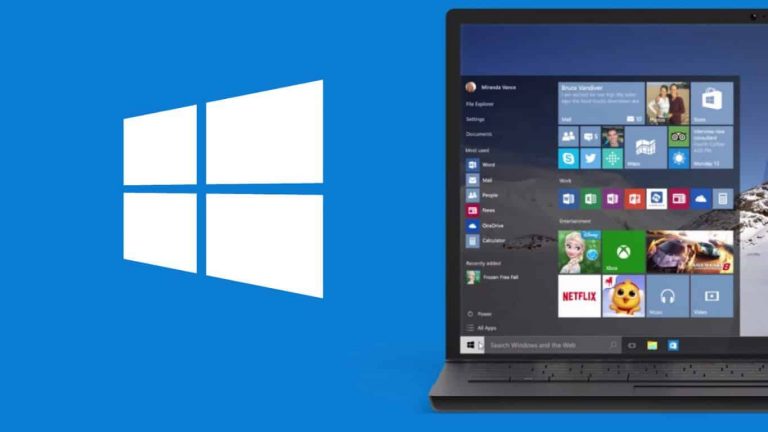Microsoft today released a new round of updates for some of the more prior versions of Windows 10 (via Neowin.) The Windows 10 April 2018 Update isn’t getting in on any of the action, and today’s fixes are just for the Fall Creators Update (version 1709), the Creators Update (version 1703), and the Anniversary Update (version 1607.) Here’s what’s fixed and broken in these releases
First off, if you’re running the Windows 10 Fall Creators Update, you’ll see KB4284822 and get bumped up to build 16299.522. There is a known issue with Device Guard in this release on-English platforms where a certain string will be displayed in English instead of the local language. You can read more about this in Microsoft’s release notes, download it manually here, and look below for the fixes:
- Addresses an application performance degradation issue in operating system functions.
- Addresses performance regression in App-V that slows many actions in Windows 10.
- Adds a new MDM Policy, “DisallowCloudNotification”, for enterprises to turn off Windows Notification traffic.
- Changes the music metadata service provider used by Windows Media Player.
- Addresses an issue with the placement of text symbols in right-to-left languages.
- Addresses an issue with editing web password fields using a touch keyboard.
- Adds a Group Policy that provides the ability to hide recently added apps from the Start menu.
- Updates the Segoe UI Emoji font to use a water gun to represent a pistol emoji.
- Addresses a reliability issue with resuming from hibernation.
- Addresses an issue where SmartHeap doesn’t work with UCRT.
- Addresses an issue to ensure that Windows Defender Application Guard endpoints comply with regional policies.
- Increases the user account minimum password length in Group Policy from 14 to 20 characters.
- Addresses an issue that causes sporadic authentication issues when using Windows Authentication Manager.
- Addresses an issue where an Azure Active Directory account domain change prevents customers from logging on.
- Addresses an issue that displays unnecessary “Credential Required” and “Do you want to allow the app to access your private key?” messages. This issue occurs when running a Universal Windows Platform (UWP) application.
- Addresses an issue that causes the LSASS service to become unresponsive, and the system needs to be restarted to recover.
- Addresses an issue where client applications running in a container image don’t conform to the dynamic port range.
- Adds a new registry key that prevents access to the Internet using WWAN if a non-routable ethernet is connected. To use this new registry key, add IgnoreNonRoutableEthernet” (Dword) on HKEY_LOCAL_MACHINE\Software\Microsoft\Wcmsvc using regedit, and set it to 1.
- Adds a new registry key that allows customers to control access to the Internet using WWAN without using the default connection manager. To use this new registry key, fMinimizeConnections” (Dword) on HKEY_LOCAL_MACHINE\Software\Microsoft\Windows\WcmSvc\Local using regedit, and set it to 0.
- Addresses an issue that prevented ISO/DVD mounts and eject from working using VM settings and Powershell because of menu transition issues in VMConnect.
- Addresses an issue where restarting the Hyper-V host with Hyper-V Replica (HVR) enabled could cause replication to stop. It may also require a manual restart to resume the replication from a suspended state. The replication state should be normal after the Hyper-V host/VMMS is restarted.
- Addresses an issue that might cause the Mitigation Options Group Policy client-side extension to fail during GPO processing. The possible errors are “Windows failed to apply the MitigationOptions settings. MitigationOptions settings might have its own log file” or “ProcessGPOList: Extension MitigationOptions returned 0xea.” This issue occurs when Mitigation Options have been defined using Group Policy, the Windows Defender Security Center, or the PowerShell Set-ProcessMitigation cmdlet.
- Addresses an issue that causes a connection failure when a Remote Desktop connection doesn’t read the bypass list for a proxy that has multiple entries.
- Addresses an issue where Windows Defender Security Center and the Firewall Pillar app stop working when opened. This is caused by a race condition that occurs if third-party antivirus software has been installed.
Next up, if you’re still running the Windows 10 Creators Update, you’ll be getting KB4284830 and see your build number go up to 15063.1182. Luckily, there are no documented known issues with this update. See below for an overview of the fixes, and click here to manually download it:
- Addresses performance regression in App-V that slows many actions in Windows 10.
- Addresses an issue with the soft keyboard’s input modes in WPF applications.
- Addresses an issue where SmartHeap doesn’t work with UCRT.
- Addresses an issue that causes sporadic authentication issues when using Windows Authentication Manager.
- Addresses an issue that displays unnecessary “Credential Required” and “Do you want to allow the app to access your private key?” messages. This issue occurs when running a Universal Windows Platform (UWP) application.
- Addresses an issue that causes the LSASS service to become unresponsive, and the system must be restarted to recover.
- Addresses an issue where client applications running in a container image don’t conform to the dynamic port range.
- Addresses an issue in MSXML 3.0 that causes the body of the request to be empty when the IXMLHTTPRequest send() method is called. This issue occurs when URL redirection causes the send() method to be invoked a second time with a different URL.
- Adds a new MDM Policy “DisallowCloudNotification” for enterprises to turn off Windows Notification traffic.
Finally, the Windows 10 Anniversary Update is seeing KB4284833 and is getting pushed up to build 14393.2339. There are no known issues with this version, and you’ll find fixes for App-V and CPU-performance when using Virtual Switch Ports. Again, these are just some of the fixes, so please feel free to check here for the full list. Let us know in the comments below if you’re having any problems with these new builds.


